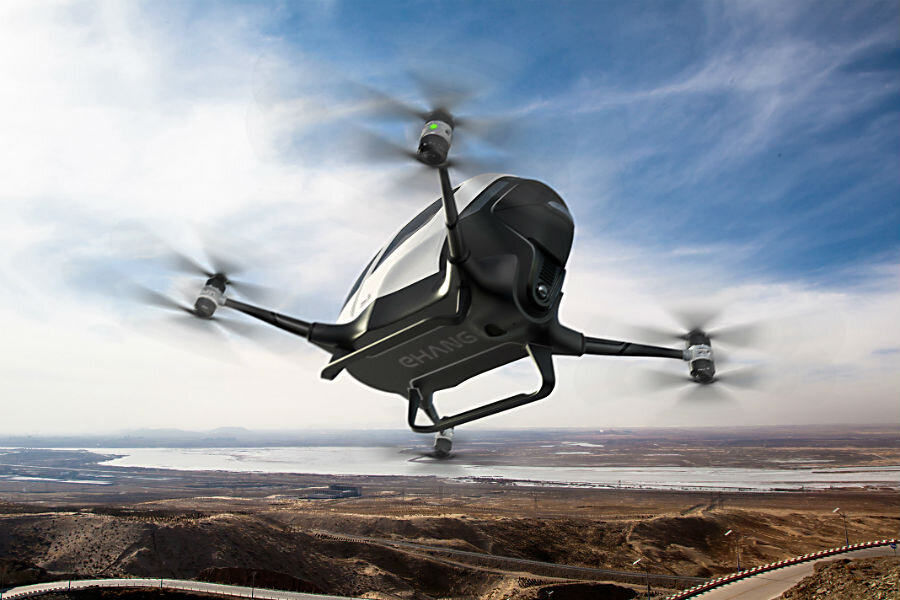Can Nevada help drone taxis get off the ground?
Loading...
Nevada could soon approve the next generation of self-driving vehicles, flying passengers through the air in a new autonomous aerial vehicle (AAV).
EHang, Inc., a China-based smart drone manufacturer, recently announced a partnership with the state of Nevada that could bring its EHang 184 AAV from concept to reality. The single-passenger, pilotless octocopter was approved for “flight testing, training, and development” at a Federal Aviation Administration (FAA) test site in the Silver State.
While EHang has already brought to market a line of smaller, personal drones controllable via smartphone, its goal of extending the technology to human transportation has yet to lift off.
The AAV, unveiled in January at the 2016 Consumer Electronics Show, could get FAA certification within the year.
The electrical-powered EHang AAV is built to carry a single passenger, piloting the craft up to 23 minutes at an average speed of around 60 miles per hour. It would need a two to four hour recharge between flights.
The EHang initiative is backed by the Nevada Institute for Autonomous Systems, the state’s bureau for drone research and development, along with the Governor's Office of Economic Development.
Nevada hopes its dry skies and thousands of square miles of open airspace and airfields will invite companies like EHang to "lead the development of the next generation of UAS technologies and services."
It may take more time for the government to get on board.
The skies are filling with an ever growing number of drones for recreation, education, and business, but the FAA is still working to keep the crafts in check. And while some users can fly their personal drones without federal oversight, a 440-pound vehicle like the 184 would require solidified FAA rules before launching.
“Even just a foot off the ground in your own backyard, the FAA is responsible for that airspace,” says Abby Speicher, co-founder and chief executive officer of the drone consultation and training company DARTdrones, in a phone interview with The Christian Science Monitor.
"I don’t see the FAA moving very quickly" toward approving the EHang project, says Ms. Speicher. “It’s a really long process.”
Speicher told the Monitor in March that acquiring a commercial license for small drones can currently take months even for licensed pilots.
Despite the many federal obstacles, advocates predict AAV technology will become widespread in the coming decades, replacing cars' congestion, pollution, and human error with safer, cleaner flights through clear skies.
“That’s the dream,” Speicher says. “Think about how many people sit in traffic every day waiting to get to work when there’s so much airspace right above them.”
Companies like Google and major automobile manufacturers are gearing up to provide terrestrial autonomous vehicles in the near future, although that tech’s success depends on its ability to adapt to roads full of human drivers.








